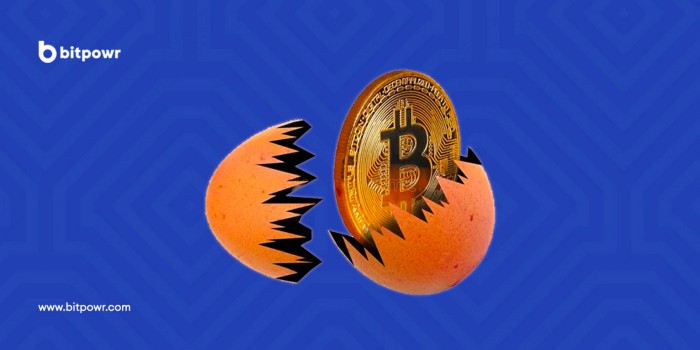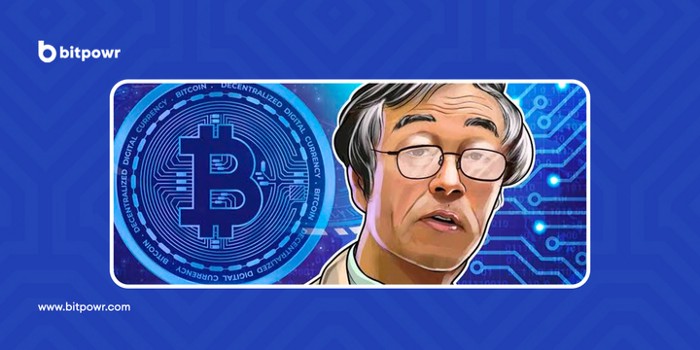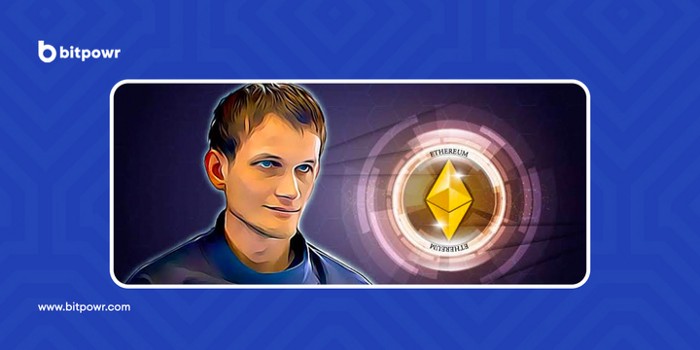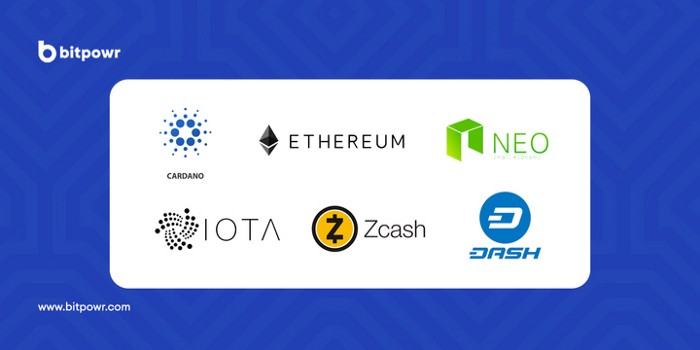History of the Blockchain, how it all started, and where it’s headed?
The words block and chain were used separately in Satoshi Nakamoto’s original paper but were eventually popularized as a single word, blockchain by 2016.
This is the first of a series of articles piercing through the walls of Blockchain looking at where it started, later we’ll a deeper dive into “What it is” “Its use cases” and its application in Businesses today.
Many of the technology we use now began as revolutionary disruptions in their own eras. Take, for example, how cell phones evolved into smartphones, which we now practically cannot live without. Consider how much smartphones have altered our way of life and work. Also, look at when the Internet started, many skeptics some prominent people of that time made famous statements about the Internet never becoming something big. Just like experts before them who said computers would never be in every home, yet now they’re in every pocket, and magnitudes more powerful than they were.
We’re now in the midst of another quiet revolution: blockchain, a distributed database that maintains a continuously growing list of ordered records, called “blocks.” Consider what’s happened in just the past 10 years, but let’s start from:

The early days
The very first appearance of the idea of Blockchain was in 1982 when Cryptographer David Chaum presented a dissertation “Computer Systems Established, Maintained, and Trusted by Mutually Suspicious Groups”.
Further down the line in 1991 Stuart Haber and W. Scott Stornetta wrote about their work on a cryptographically secured chain of blocks. They wanted to set up a system that prevented tampering with document records. Haber, Stornetta, and Dave Bayer improved the design in 1992 by incorporating Merkle trees, which increased efficiency by allowing several document certificates to be collected into a single block. However, this technology was not really used, and the patent expired in 2004, but it represented an important step in the evolution of what would become blockchain technology.
A Pause.
While there was a long pause and the Merkle Tree technology went unused and the patent lapsed in 2004, Hal Finney (Harold Thomas Finney II), a computer scientist and cryptographic campaigner, introduced the RPoW (Reusable Proof Of Work) — developed from the PoW algorithm which was first introduced in 1993, where Moni Naor and Cynthia Dwork published an article to deter the DoS (Denial-of-service) attacks. The article mainly discusses the potential of the algorithm to prevent fraud and its sustainability in the long term. On the other hand, The Hal Finney Reusable Proof Of Work worked by receiving a non-exchangeable or a non-fungible Hashcash based Proof of Work token. In return, created an RSA-signed token(RSA_ -Rivest–Shamir–Adleman_ is a public-key cryptosystem that is widely used for secure data transmission.) that could then be transferred from person to person.
RPoW solved the problem of double-spending by registering token ownership on a trustworthy server that allows users all over the world to check its correctness and integrity in real-time.
“ In History, proof of work has been at the heart of a spate of cryptocurrencies, enabling for safe, decentralized consensus.”

Arrival of Bitcoin.
In late 2008, a mysterious figure called Satoshi Nakamoto published a paper on cryptography and finance. The paper described Bitcoin as “a Peer-to-Peer Electronic Cash System,” and it proposed a way to make money transactions between two parties without having to trust each other or go through banks or other third parties.
On the 3rd of January 2009, Satoshi Nakamoto mined the first bitcoin block, which included a reward of 50 bitcoins. Hal Finney was the first Bitcoin recipient, receiving 10 bitcoins from Satoshi Nakamoto in the world’s first bitcoin transaction on January 12, 2009.
Today individual miners use the proof-of-work system to “mine” Bitcoins for a reward, which was subsequently verified by the network’s decentralized nodes. While Bitcoin was not the first online currency to be proposed, the bitcoin proposal solved several problems in the field and has been by far the most successful version.
“The engine that runs the bitcoin ledger that Nakamoto designed is called the blockchain; the original and largest blockchain is the one that still orchestrates bitcoin”.

Birth of Blockchain 2.0- Ethereum
In 2013, Vitalik Buterin, a programmer and a co-founder of Bitcoin Magazine stated that Bitcoin needed a scripting language for building decentralized applications. Failing to gain agreement in the community, Vitalik started the development of a new blockchain-based distributed computing platform, Ethereum, that featured a scripting functionality, called smart contracts. Smart contracts are programs or scripts that are deployed and executed on the Ethereum blockchain, they can be used for example to make a transaction if certain conditions are met. Smart contracts are written in specific programming languages and compiled into bytecode, which a decentralized Turing-complete virtual machine, called the Ethereum virtual machine (EVM) can then read and execute.
Developers are also able to create and publish applications that run inside Ethereum blockchain. These applications are usually referred to as DApps (decentralized applications) and there are already hundreds of DApps running in the Ethereum blockchain, including social media platforms, gambling applications, and financial exchanges.
The cryptocurrency of Ethereum is called Ether, it can be transferred between accounts and is used to pay the fees for the computational power used when executing smart contracts.
In August 2014, the bitcoin blockchain file size, containing records of all transactions that have occurred on the network, reached 20 GB. In January 2015, the size had grown to almost 30 GB, and from January 2016 to January 2017, the bitcoin blockchain grew from 50 GB to 100 GB in size. The ledger size had exceeded 200 GB by early 2020.
2015 was the year of Hyperledger. Hyperledger is a non-profit organization that promotes the use of blockchain technology to improve the performance and reliability of existing systems that facilitate global commercial transactions. 2015 -The Linux Foundation announced the blockchain open-source Project. They named it Hyperledger, and it has since served as a collaborative development platform for distributed ledgers. Hyperledger aimed at encouraging cross-industry collaboration for the development of blockchain and distributed ledgers under the leadership of Brian Behlendorf.
A New Blockchain -EOS.IO
In 2017, a white paper explaining a new blockchain system powered by EOS as the native coin was published. Unlike other blockchain protocols, EOS attempts to imitate real-world computer characteristics such as CPU and GPU. EOS basic function is to provide easy-to-use tools for developing dApps and to enable instantaneous transactions and offer scalability to industrial-scale applications. The system was developed by Dan Larrimer and it is very similar to Ethereum. EOS has revolutionized the market due to two major reasons such as:
Features of EOS Blockchain
-
Parallel Processing — Parallel, faster transaction speeds with a capacity to conduct millions of transactions per second and more scalability while using the platform.
-
Decentralized Operating System — Developers can build their applications on EOS blockchain by using EOS coins. The coins are not utilized, only the proof of their holding is necessary to be able to use EOS resources. It also helps app developers to communicate with each other.
-
A Constitution — Every block mined has a set of rules which are to be followed by everyone making the platform completely decentralized. Self sufficiency and Evolution — The current model provides 5% inflation to develop the network further.
-
Low latency — Least possible latency with a smooth running of DApps.

Blockchain 3.0 -The Future
Blockchain 3.0 aims to address the scalability, sustainability, pricing, interoperability, and security issues that plagued blockchain 1.0 and 2.0, offering improved solutions through a refined framework.
NEO, the first open-source, decentralized, and blockchain platform developed in China, is one of the latest blockchain 3.0 applications. Despite the fact that the country has prohibited cryptocurrency, it remains active in blockchain technology. NEO positions itself as the Chinese Ethereum, having already secured the endorsement of Alibaba CEO Jack Ma, and aims to have the same impact in the country as Baidu.
Cardano is another Blockchain 3.0 application. Cardano, led by Charles Hoskinson (one of Ethereum’s co-founders), is a cutting-edge blockchain platform that includes smart contracts, transaction systems, and Dapps. It is the result of scientific philosophy and high-level research. Cardano is leading the charge of Blockchain 3.0, pioneering an entirely new approach for digital currencies. Let’s look at how Cardano differs from Ethereum.
-
Cardano uses Haskell programming language, whereas Ethereum uses Solidity. Haskell is a universally accepted programming language with non-strict semantics, whereas Solidity is a contact-oriented language explicitly built for writing smart contracts. Haskell enables developers to write codes precisely, enabling them to establish efficient and secure protocols. Solidity, on the other hand, possesses serious security issues.
-
Cardano uses a proof of stake consensus mechanism, whereas Ethereum uses proof of work. Instead of miners wasting their resources for computing the math problem, the POS system relies on factors such as the wealth of the creator and complexity levels in the network at that time. POS consensus mechanism not only saves energy resources but also reduces the risks of 51% attack (because an attacker trying to purchase 51% of coins will automatically see the coin’s cost appreciation).
In addition to IOTA and NEO, other second-generation blockchain platforms are also having a ripple effect in the sector. Monero Zcash and Dash blockchains came into being as a way of addressing some of the security and scalability issues associated with the early blockchain applications. Dubbed as privacy Altcoins, the three blockchain platform seek to provide high levels of privacy and security when it comes to transactions.
The blockchain history discussed above involves public blockchain networks, whereby anyone can access the contents of a network. However, with the evolution of technology, a number of companies have started adopting the technology internally as a way of enhancing operational efficiency.
Large enterprises are investing big in hiring professionals as they seek to gain a head start on the use of technology. Companies like Microsoft who appear to have taken the lead when it comes to exploring blockchain technology applications resulting in what has come to be known as private, hybrid, and federated blockchains.
2022 and Beyond
The future of Blockchain technology looks bright, because of the way governments and enterprises are investing big as they seek to spur innovations and applications in the sector. It is becoming increasingly clear that one day there will be a public blockchain that anyone can use.
Advocates expect the technology to help in the automation of most tasks handled by professionals in all sectors. The technology is already finding great use in supply management as well as in the cloud computing business even search engines on the internet are also being built.
As the technology evolves, Gartner Trend Insights expects at least one business built on blockchain to come into being valued at more than $10 billion by 2022. Due to the Blockchain Digital Transformation, the research firm expects the business value to grow to over $176 billion by 2025 and exceed $3.1 trillion by 2030.
Today blockchain is already used in a variety of applications, not limited to cryptocurrencies it radically has increased the demand for Blockchain professionals, Blockchain infrastructures and a lot of companies are also implementing Blockchain to their various projects. Bitbowr is one of the many Applications of Blockchain technology beyond bitcoin and even Ethereum currencies. Bitpowr is a Blockchain infrastructure that functions more like AWS for cryptocurrency. It was created in response to the difficulties and high costs of building on the blockchain; which requires highly competent software or blockchain engineers to design and manage the product, as well as resources to build the application and the expense of running and maintaining the nodes. You’ll also need to account for transaction monitoring and security, and you’ll end up spending a lot of money integrating the blockchain rather than building your product.” Well no need to worry anymore, we are here to help, reach out to us we are happy to help
Follow up with our next article to have a full grasp of what Blockchain technology is and its endless life applications.




